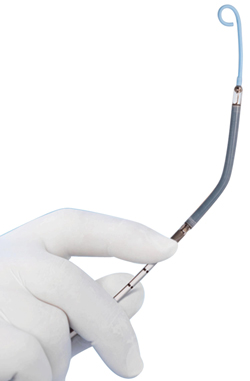Chad Kimpel died multiple times on July 1.
That was the day a heart attack brought the 41-year-old father of three from Farragut, Iowa, to UNMC’s hospital partner, The Nebraska Medical Center.
“My heart stopped before they got me on the life flight chopper to get here,” Kimpel said. “They shocked me and brought me back, but the doctor said I died several more times on the flight here. They kept bringing me back.”
Kimpel was diagnosed with heart failure. When he returned to the medical center in January, his heart worked at just a fraction of its potential and his remaining arteries were blocked. Kimpel’s cardiologists decided to place a stent in his artery.
 |
Surgeons at The Nebraska Medical Center can now use the Impella 2.5 – the world’s smallest heart pump. |
“The Impella acts almost like an artificial heart,” said Ed O’Leary, M.D., an associate professor of cardiology at UNMC and a cardiologist at The Nebraska Medical Center. “Without this machine, his blood pressure would drop to dangerously low levels and he might not make it through the procedure.”
Dr. O’Leary inserted the Impella pump — the world’s smallest heart pump — through the femoral artery in Kimpel’s left leg. He then guided it through his body into his heart. Once in place, the straw-sized pump assisted Kimpel’s heart by pulling blood out of the left ventricle and into the aorta.
By keeping his blood flowing, the cardiology team was able to keep Kimpel’s blood pressure stable while placing the stents in his artery. Once the stents were placed, the Impella pump was removed and Kimpel’s heart pumped blood through a newly cleared artery.
The Impella is designed to help the heart for short periods of time. Kimpel’s angioplasty took only two hours. After the procedure, Kimpel was all smiles.
“I feel great,” he said. “The technology is amazing. They put this little turbocharger in my heart and I feel great!”
The Impella was approved by the FDA in June of 2008.